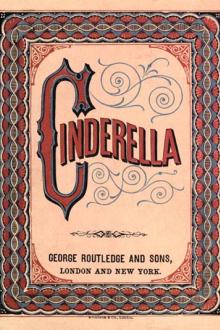The Mysterious Island by Jules Verne (books to read in a lifetime .txt) 📕

Read free book «The Mysterious Island by Jules Verne (books to read in a lifetime .txt) 📕» - read online or download for free at americanlibrarybooks.com
- Author: Jules Verne
Read book online «The Mysterious Island by Jules Verne (books to read in a lifetime .txt) 📕». Author - Jules Verne
The 1,200 miles to the Low Archipelago was a long distance. And now, at the beginning of the stormy season, a small boat would certainly not be able to accomplish it. The building of a boat, even when the proper tools are provided, is a difficult task, and as the colonists had none of these, the first thing to do was to make hammers, hatchets, adzes, saws, augers, planes, etc., which would take some time. It was therefore decided to winter on Lincoln Island, and to search for a more comfortable dwelling than the Chimneys in which to live during the inclement weather.
The first thing was to utilize the iron ore which the engineer had discovered, by transforming it into iron and steel.
Iron ore is usually found in combination with oxygen or sulphur. And it was so in this instance, as of the two specimens brought back by Cyrus Smith one was magnetic iron, and the other pyrites or sulphuret of iron. Of these, it was the first kind, the magnetic ore, or oxide of iron, which must be reduced by coal, that is to say, freed from the oxygen, in order to obtain the pure metal. This reduction is performed by submitting the ore to a great heat, either by the Catalonian method, which has the advantage of producing the metal at one operation, or by means of blast furnaces which first smelt the ore, and then the iron, carrying off the 3 or 4 per cent of coal combined with it.
The engineer wanted to obtain iron in the shortest way possible. The ore he had found was in itself very pure and rich. Such ore is found in rich grey masses, yielding a black dust crystallized in regular octahedrons, highly magnetic, and in Europe the best quality of iron is made from it. Not far from this vein was the coal field previously explored by the colonists, so that every facility existed for the treatment of the ore.
“Then, sir, are we going to work the iron?” questioned Pencroff. “Yes, my friend,” answered the engineer.
“But first we will do something I think you will enjoy—have a seal hunt on the island.”
“A seal hunt!” cried the sailor, addressing Spilett “Do we need seals to make iron?”
“It seems so, since Cyrus has said it,” replied the reporter.
But as the engineer had already left the Chimneys, Pencroff prepared for the chase without gaining an explanation.
Soon the whole party were gathered upon the beach at a point where the channel could be forded at low water without wading deeper than the knees. This was Smith’s first visit to the islet upon which his companions had been thrown by the balloon. On their landing, hundreds of penguins looked fearlessly at them, and the colonists armed with clubs could have killed numbers of these birds, but it would have been useless slaughter, and it would not do to frighten the seals which were lying on the sand some cable lengths away. They respected also certain innocent-looking sphemiscus, with flattened side appendages, mere apologies for wings, and covered with scale-like vestiges of feathers.
The colonists marched stealthily forward over ground riddled with holes which formed the nests of aquatic birds. Towards the end of the island, black objects, like moving rocks, appeared above the surface of the water, they were the seals the hunters wished to capture.
It was necessary to allow them to land, as, owing to their shape, these animals, although capital swimmers and difficult to seize in the sea, can move but slowly on the shore. Pencroff, who knew their habits, counselled waiting until the seals were sunning themselves asleep on the sand. Then the party could manage so as to cut off their retreat and despatch them with a blow on the muzzle. The hunters therefore hid themselves behind the rocks and waited quietly.
In about an hour half a dozen seals crawled on to the sand, and Pencroff and Herbert went off round the point of the island so as to cut off their retreat, while the three others, hidden by the rocks, crept forward to the place of encounter.
Suddenly the tall form of the sailor was seen. He gave a shout, and the engineer and his companions hurriedly threw themselves between the seals and the sea. They succeeded in beating two of the animals to death, but the others escaped.
“Here are your seals, Mr. Smith,” cried the sailor, coming forward.
“And now we will make bellows,” replied the engineer.
“Bellows!” exclaimed the sailor. “These seals are in luck.”
It was, in effect, a huge pair of bellows, necessary in the reduction of the ore, which the engineer expected to make from the skins of the seals. They were medium-sized, about six feet long, and had heads resembling those of dogs. As it was useless to burden themselves with the whole carcass, Neb and Pencroff resolved to skin them on the spot, while Smith and the reporter made the exploration of the island.
The sailor and the negro acquitted themselves well, and three hours later Smith had at his disposal two seal skins, which he intended to use just as they were, without tanning.
The colonists, waiting until low water, re-crossed the channel and returned to the Chimneys.
It was no easy matter to stretch the skins upon the wooden frames and to sew them so as to make them sufficiently air-tight. Smith had nothing but the two knives to work with, yet he was so ingenious and his companions aided him so intelligently, that, three days later, the number of implements of the little colony was increased by a bellows intended to inject air into the midst of the ore during its treatment by heat—a requisite to the success of the operation.
It was on the morning of the 20th of April that what the reporter called in his notes the “iron age” began. The engineer had decided to work near the deposits of coal and iron, which were situated at the base of the northeasterly spurs of Mount Franklin, six miles from the Chimneys. And as it would not be possible to go back and forth each day, it was decided to camp upon the ground in a temporary hut, so that they could attend to the important work night and day.
This settled, they left in the morning, Neb and Pencroff carrying the bellows and a stock of provisions, which latter they would add to on the way.
The road led through the thickest part of Jacamar Wood, in a northwesterly direction. It was as well to break a path which would henceforth be the most direct route between Prospect Plateau and Mount Franklin. The trees belonging to the species already recognized were magnificent, and Herbert discovered another, the dragon tree, which Pencroff designated as an “overgrown onion,” which, notwithstanding its height, belongs to the same family of liliaceous plants as the onion, the civet, the shallot, or the asparagus. These dragon trees have ligneous roots which, cooked, are excellent, and which, fermented, yield a very agreeable liquor. They therefore gathered some.
It took the entire day to traverse the wood, but the party were thus able to observe its fauna and flora. Top, specially charged to look after the fauna, ran about in the grass and bushes, flushing all kinds of game. Herbert and Spilett shot two kangaroos and an animal which was like a hedge-hog, in that it rolled itself into a ball and erected its quills, and like an ant-eater, in that it was provided with claws for digging, a long and thin snout terminating in a beak, and an extensile tongue furnished with little points, which enabled it to hold insects.
“And what does it look like boiling in the pot?” asked Pencroff, naturally.
“Like an excellent piece of beef,” answered Herbert.
“We don’t want to know any more than that,” said the sailor.
During the march they saw some wild boars, but they did not attempt to attack the little troupe, and it seemed that they were not going to have any encounter with savage beasts, when the reporter saw in a dense thicket, among the lower branches of a tree, an animal which he took to be a bear, and which he began tranquilly to sketch. Fortunately for Spilett, the animal in question did not belong to that redoubtable family of plantigrades. It was an ai, better known as a sloth, which has a body like that of a large dog, a rough and dirty-colored skin, the feet armed with strong claws which enable it to grasp the branches of trees and feed upon the leaves. Having identified the animal without disturbing it, Spilett struck out “bear” and wrote “ai” under his drawing and the route was resumed.
At 5 o’clock Smith called a halt. They were past the forest and at the beginning of the massive spurs which buttressed Mount Franklin towards the east. A few hundred paces distant was Red Creek; so drinking water was not wanting.
The camp was made. In less than an hour a hut, constructed from the branches of the tropical bindweed, and stopped with loam, was erected under the trees on the edge of the forest. They deferred the geological work until the next day. Supper was prepared, a good fire blazed before the hut, the spit turned, and at 8 o’clock, while one of the party kept the fire going, in case some dangerous beast should prowl around, the others slept soundly.
The next morning, Smith, accompanied by Herbert, went to look for the place where they had found the specimen of ore. They found the deposit on the surface, near the sources of the creek, close to the base of one of the northeast buttresses. This mineral, very rich in iron, enclosed in its fusible vein-stone, was perfectly suited to the method of reduction which the engineer intended to employ, which was the simplified Catalonian process practised in Corsica.
This method properly required the construction of ovens and crucibles in which the ore and the coal, placed in alternate layers, were transformed and reduced. But Smith proposed to simplify matters by simply making a huge cube of coal and ore, into the centre of which the air from the bellows would be introduced. This was, probably, what Tubal Cain did. And a process which gave such good results to Adam’s grandson would doubtless succeed with the colonists of Lincoln Island.
The coal was collected with the same facility as the ore, and the latter was broken into little pieces and the impurities picked from it. Then the coal and ore were heaped together in successive layers—just as a charcoal-burner arranges his wood. Thus arranged, under the influence of the air from the bellows, the coal would change into carbonic acid, then into oxide of carbon, which would release the oxygen from the oxide of iron.
The engineer proceeded in this manner. The sealskin bellows, furnished with a pipe of refractory earth (an earth difficult of fusion), which had previously been prepared at the pottery, was set up close to the heap of ore. And, moved by a mechanism consisting of a frame, fibre-cords, and balance-weight, it injected into the mass a supply of air, which, by raising the temperature, assisted the chemical transformation which would give the pure metal.
The operation was difficult. It took all the patience and ingenuity of the colonists to conduct it properly; but finally it succeeded, and the result was a pig of iron in a spongy state, which must be cut and forged in order to expel the liquified gangue. It was evident that these self-constituted smiths wanted a hammer, but they were no worse off than the first metallurgist, and they did as he must have done.
The first pig, fastened to a wooden handle, served as a hammer with which to forge the second upon an anvil of granite, and they thus obtained a coarse metal, but one which could be utilized.
At length, after much trouble and labor, on the 25th of April, many bars of iron had been forged and turned into crowbars, pincers, pickaxes, mattocks, etc., which Pencroff and Neb declared to be real jewels.
But in order to be in its most serviceable state, iron must be turned into steel. Now steel, which is a combination of iron and carbon, is made in two ways: first from cast iron, by decarburetting the molten metal, which gives natural or puddled steel; and, second, by the method of cementation, which consists in carburetting malleable iron. As the engineer had iron in a pure state, he chose the latter method, and heated the metal with powdered charcoal in a crucible made from refractory earth.
This steel, which was malleable hot and cold, he worked with the hammer. And Neb and Pencroff, skillfully directed, made axe-heads, which,





Comments (0)